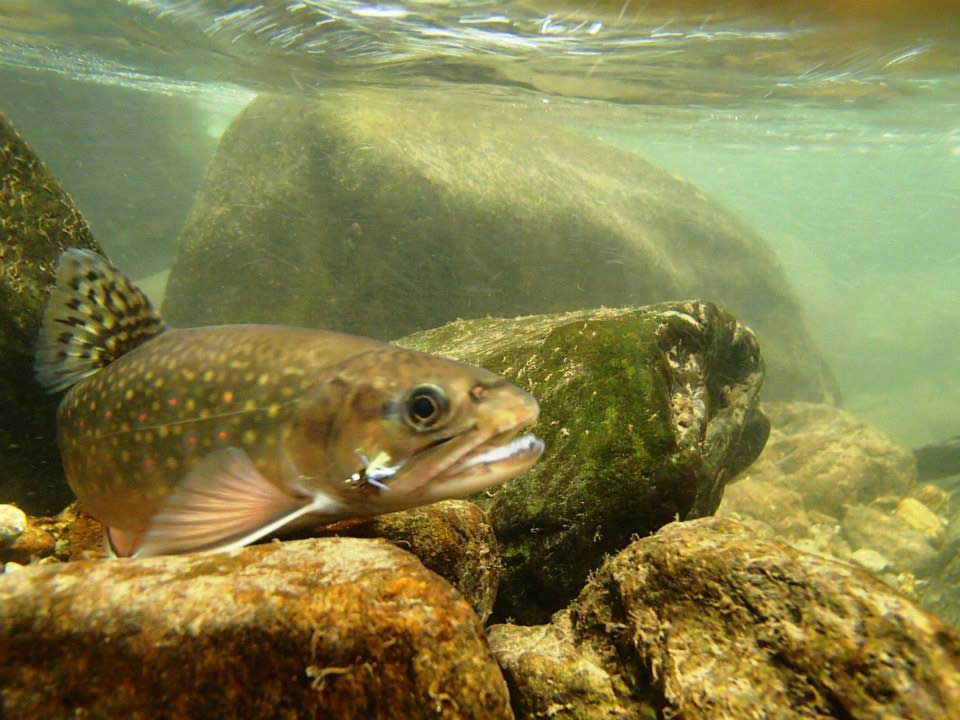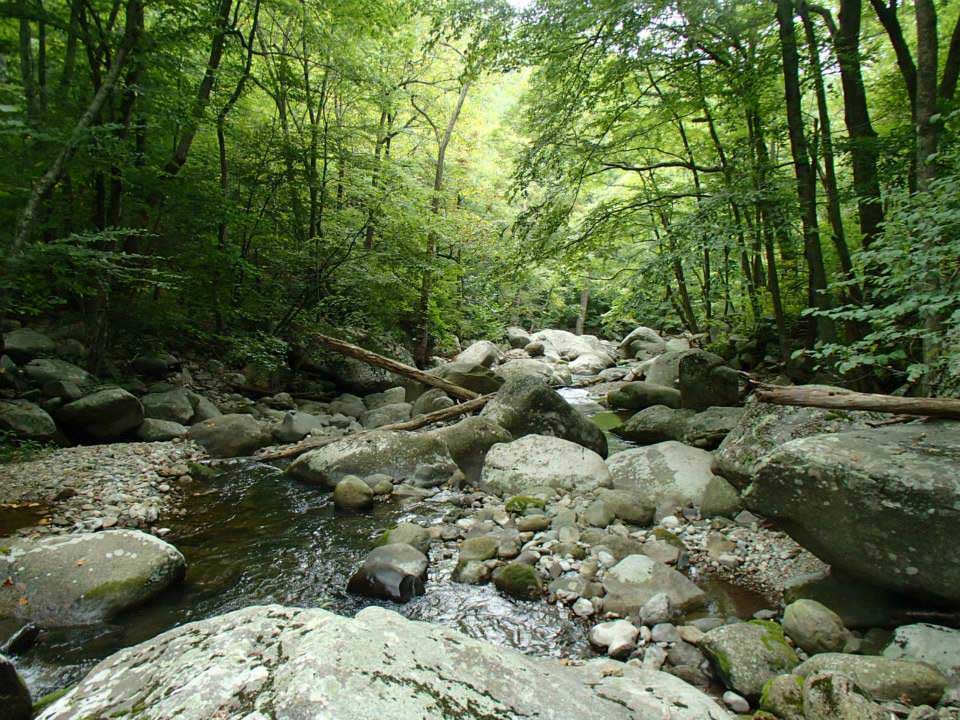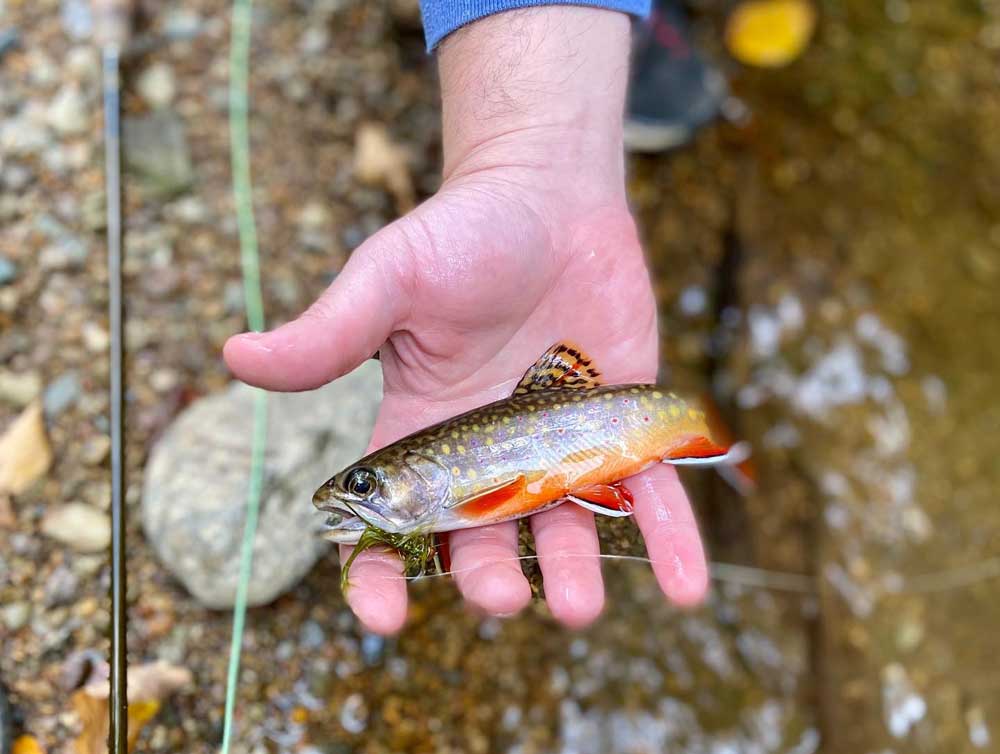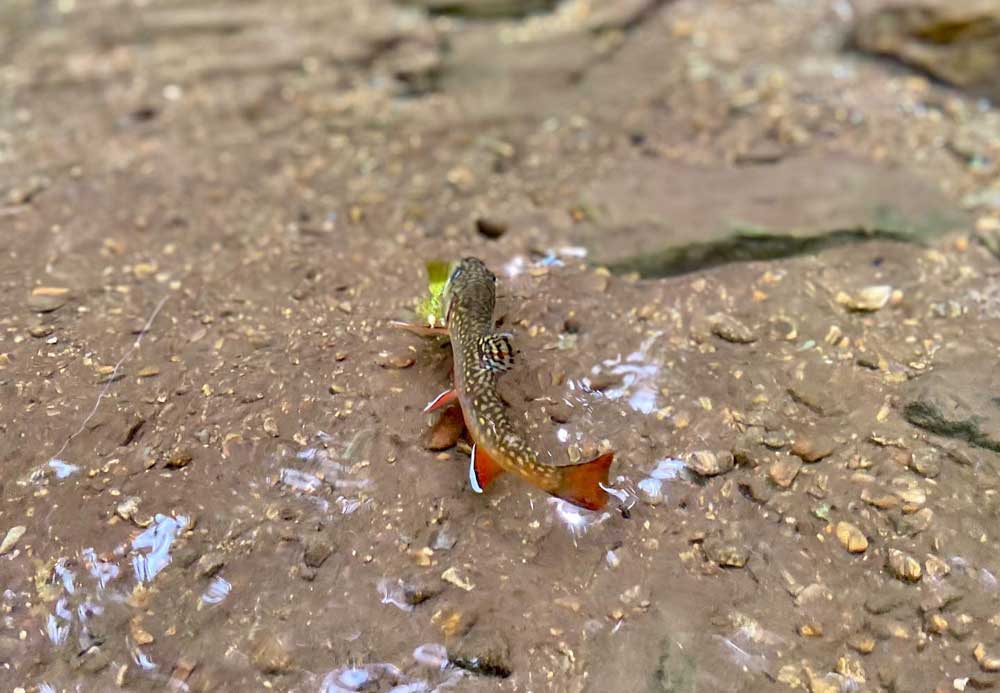Shawn Swearingen
These are not the monsters you find in the still waters and tannin stained rivers of the North Country. The relatives in the thin blue lines that stretch down the ribs of the Appalachian Mountains specifically in the Blue Ridge region are the hidden gems. If you are looking to find Brook Trout at the end of your line this summer and fall, there are some things to keep in mind!

Where to Find Brook Trout in the Appalachians
The state fish and game or natural resource departments through the Blue Ridge area have websites devoted specifically for Brook Trout waters and their regulations. No matter which state, you need to pay close attention to the regulations as they can vary from stream to stream, and even between certain sections of the same stream. A lower section may stock for rainbows and brown trout where you can use bait and treble hooks. However, a short distance upstream you may find yourself restricted to only artificial lures/flies with the barb pinched.
The state websites will often highlight which streams are a good starting point. From there you can check with any local fly fishing or bait shop in the area with local knowledge they may be willing to share. Do not look for free advice; be sure to buy a few flies or tackle while there. They will also help direct you on the current water conditions. If you are exploring in the warmer months or with lower river flows, there is also safe handling to consider if you are so lucky.

Fishing Gear for the Appalachian Mountains
A “trophy” Brook Trout in this region is dwarfed by their relatives in Canada or even Maine. While they inhabit smaller waters, at times they can venture to the 12-inch range in size. A lightweight spin rod with 4 or 6-pound test is a good way to go. If you are throwing flies, a 3 or 4 weight in a shorter length is ideal as the trees and overhangs are close by. Chasing “blue lines” in the Blue Ridge is not a tackle-intensive expedition. Packing light with only a few extras of what you need will make hiking the stream-side trails all the more easier.
The gems in these waters are not highly selective unless in heavily pressured waters. They are hungry as food isn’t always plentiful and can be aggressive feeders. Solid “must haves” include a green Wooly Bugger or Stimulator for fly fishing and small size spinners in assorted colors for conventional tackle. The local shop knowledge always builds on that foundation. I’ve always found the best success in working upstream, approaching the pool or the run quietly from a distance. Be observant and patient, watch for any “eats” on the surface, and for submerged branches or rocks where they may like to sit in or potentially hang you up should you connect.
With some elbow grease and willingness to hike through the brush with some scrambling over boulders, you might tread where few have before you. In typical Brook Trout waters of the Blue Ridge, waders are not needed. Maybe a solid pair of wading shoes that are grippy enough for rocks when you are scrabbling over to the next pocket water.

RECIPE: SKILLET LEMON BUTTER TROUT
Keeping Native Brook Trout Safe
While Brook Trout can be caught, regulations permitting of course, in any month of the year through the Blue Ridge region, you need to be cautious of where you walk in the fall. State fishing resources and the local tackle shops will remind you not to step in the streams during the mid to late months of fall. This is a time when Brook Trout will be laying their eggs, known as “redds,” in the pea-sized gravel beds of the rivers and streams. It is also conservation best practice not to target those fish breeding and guarding these redds that would put them under stress and disturbing the redds.

During any time of year, if catch-and-release fishing, it is good to try and keep the fish in the water as much as you can. A piece of advice that was given to me when I started chasing Brook Trout was to get my hand wet in the stream before handling. The “slime” on a trout or char is a protective coating. Handling the fish with your hands already cool from the stream water helps protect that coating when unhooking.
Conservation efforts by the states and groups like Trout Unlimited and other volunteer organizations have made strides in restoring the native and wild populations of Brook Trout. Observing a few best practices in certain times of the year can go a long way in helping the population.




























